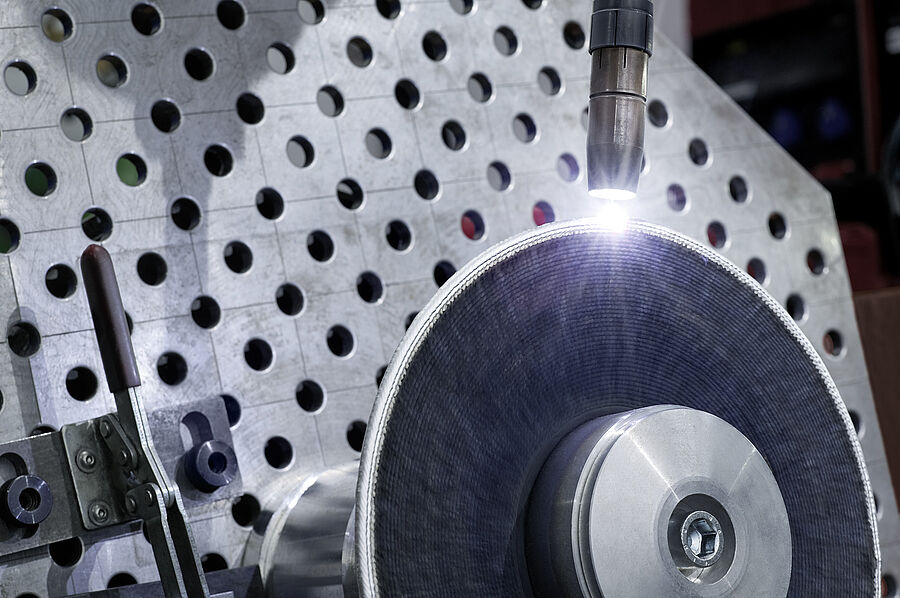Development of large structure demonstrator Plasma Metal Deposition (PMD) Process for AZ91 magnesium alloy
(c) RHP; https://rhp.at/
Previous studies have clearly shown that the Plasma Metal Deposition (PMD) process on titanium64 produces outstanding component properties while fully exploiting the advantages of additive manufacturing. The present project builds on these findings and aims to produce additional structural components for space travel. A particular focus is on the use of the light metal magnesium, which places high demands on processing.
Summary
The process started with a feasibility study, where the technical details were worked into step by step in order to achieve the desired result in a structured way. As a starting point, a study of magnesium-based alloys (AZ91) was carried out to determine the right chemical composition with the appropriate properties. Particular attention was paid to mechanical properties and corrosion tendency. The selected alloy was produced in a small quantity according to the highest quality standards and then subjected to the PMD process. In this process, the wires are melted down layer by layer to produce a sample body for subsequent characterisation. Subsequently, the effects of the process on the filler material were investigated and a comparison between the PMD components and the conventional aluminium components, which represent the current state of the art, was sought.
The success of the project depended significantly on the interaction of all partners along the process chain, starting with casting production, wire production, welding and the final characterisation. In the final reappraisal of the project, the focus was on evaluating the entire manufacturing chain, starting with the raw material and ending with the final part.
Project results
The project succeeded in producing welding wires with a diameter of 1.6 mm for the PMD process in the highest quality. Test specimens were welded and both corrosion and mechanical properties were derived. It was demonstrated that the additive component can be used at a comparable level to the cast reference part. A melting rate of 280 g per hour for thin-walled structures and 400 g for thick-walled structures was determined. Furthermore, a reasonable heat treatment was identified. As a final result, a manufacturing sketch was drawn up for commercial implementation in Europe.




